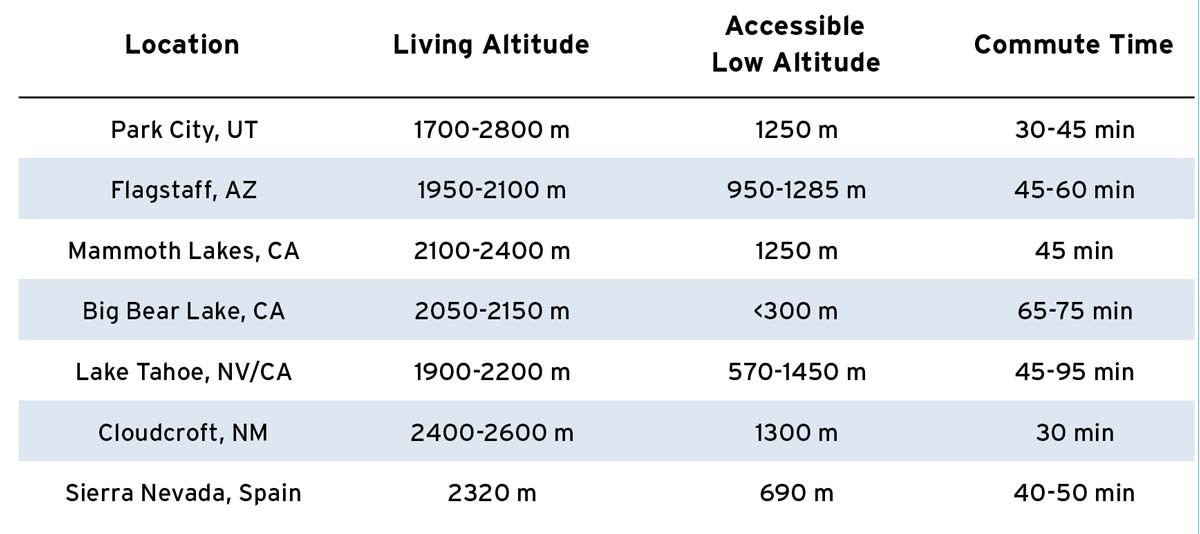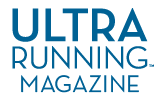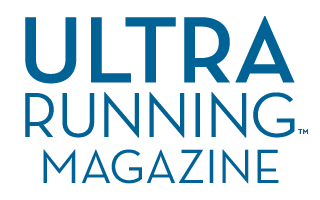I try to build endurance during the winter by increasing my mileage and then running ultras in the spring. How much slow running should I do, and how do I determine training intensity? @talehorunner
This training schedule is common for endurance athletes, especially those living in continental climates where the winters are cold and races tend to be held in the spring. Stimulating the adaptations most beneficial for ultramarathon (i.e., increased slow twitch muscle fiber distribution, metabolic flexibility, increased running economy) can be achieved by training mostly at a low intensity. Although it’s been argued that high-intensity interval training (HIIT) provides more “bang for your buck” in terms of training time and adaptation—facilitating better improvements in aerobic capacity (specifically mitochondrial biogenesis) than moderate-intensity exercise (1)—this is probably only true if one has a relatively low training volume. This doesn’t apply to most ultrarunners. What’s more, ultramarathons depend less on aerobic capacity than traditional endurance events. It’s also worth noting that there are different performance predictors for males and females in ultramarathons (2) but that weekly mileage is likely important for both sexes. In this respect, there is a limit to how much high-intensity running can be accomplished before injury risk increases considerably. The optimal training intensity distribution for ultramarathons hasn’t been determined, but the so-called 80/20 ratio (i.e., polarized training) is often favored by ultrarunners and their coaches. The model proposes running 80% of the time at an easy to moderate intensity, and the remaining 20% at a heavy to severe intensity.
Using perceived exertion is a simple, cost-effective means of managing training intensity, and has proven popular with many running coaches.
So, what is an “easy to moderate” intensity and how can it be quantified? The answer depends on what technologies and expertise you have at your disposal. The gold standard technique is to measure the lactate threshold or gas exchange threshold that occurs during an incremental exercise test on a treadmill. Although the test requires an exercise physiology laboratory (and a physiologist to interpret the results), it provides the runner with the pace and heart rate that corresponds to each training zone, allowing them to perform longer runs below threshold and rooted firmly in the “easy to moderate” domain. A slightly less resource-heavy approach is to estimate the lactate threshold as a percentage of maximum heart rate. There is tremendous individual variability in such responses, but lactate threshold usually occurs between 70-80% of maximum heart rate (HRmax) (3). If you don’t know your HRmax, it can be estimated using the formula 208 minus (0.7 x age) (4)—this is a more refined equation than the traditional 220 minus age. Keep in mind that the more “estimating” you do, the less accurate the outcome. Lastly, you can run at a “conversational” pace (a running velocity at which you aren’t too breathless to maintain a casual conversation) or at a pace that evokes a rating of perceived exertion of about 5/10. Using perceived exertion is a simple, cost-effective means of managing training intensity, and has proven popular with many running coaches. It is intuitive and often accurate, especially in experienced runners who are in tune with their bodies.
What is the most optimal way to train for a race at altitude if I live and train at sea level? @trail_runner100
The higher you get from the ground, the thinner the atmosphere. At the summit of Everest (29,032 feet), the atmospheric pressure (and the partial pressure of oxygen) is about one-third the value at sea level. Running at altitude therefore forces athletes to breathe oxygen that has less “drive” to cross the barrier from the lungs into the blood. If you have the time and means, you can prepare for a race at altitude by implementing a “live high, train low” (LHTL) strategy. The two components of LHTL are living and/or sleeping at altitude (or simulated altitude) to allow for favorable physiological adaptations (like increased red blood cell count), and training at sea level so that exercise intensity can be maintained. In practical terms, LHTL can be accomplished by traveling to a location that allows a convenient commute from low to high-altitude (see Table 1) (5), or investing in an altitude tent that’s installed over the bed. LHTL can be expensive and time-consuming, and there’s little convincing evidence that such interventions are especially beneficial for ultrarunners, especially in very long races where musculoskeletal conditioning and gastrointestinal problems are likely to have more of a governing role in success.
It also isn’t clear at what altitude ultra-endurance performance becomes diminished. In shorter races that place greater demands on aerobic capacity, it may be as low as 4,000 feet (1,200 m). However, clinically meaningful changes in oxygen levels in the blood do not occur until above 8,000 feet (2,500 m) (6). So, if your race takes you above this altitude, try and arrive at the destination at least 1-2 weeks beforehand to allow for basic acclimation, especially with respect to the cardiopulmonary and renal systems. Furthermore, if you’re going to spend prolonged periods above 8,000 feet, you are strongly advised to do some reconnaissance and assess your susceptibility to acute mountain sickness (AMS). This very serious (potentially fatal) complication to altitude occurs in approximately 25-50% of people (7). Its incidence has little to do with training experience or cardiorespiratory fitness. In terms of preparing your body for the stress of mountainous running when you live in a flat area, others have comprehensively addressed this problem (see trainright.com) (8).

Please confirm beer helps? @naplesbeerrunningcompany
I could, but I’d be lying. Beer certainly doesn’t help with training or recovery. The good news is that its negative effects on both may be a little overstated. Studies show that drinking alcohol after exercise can diminish the rate of muscle protein synthesis (9)—an important component of recovery following strenuous exercise. It can also reduce the body’s ability to resynthesize glycogen (the stored form of carbohydrate) in the muscles (10). However, these negative effects were studied in exercisers who drank large volumes of alcohol after exercise, the equivalent of about 8-12 drinks, which is excessive by most people’s evaluation. One or two drinks may not have such a detrimental effect.
The main problem is that alcohol is a potent diuretic, meaning it increases the production and volume of urine. A study by Shirreffs et al. showed that alcoholic beverages of 4% concentration (a standard beer) had a significant influence on the body’s ability to rehydrate after exercise (11). The post-exercise volumes consumed in the study (about 2,000 mL) indicate that 2-3 beers (about 45g of alcohol) would be reasonably well tolerated. So, to summarize, a celebratory beer is unlikely to have a major influence on recovery after racing. However, there may be considerable carryover effects on training when that beer becomes inevitably pluralized. Ultrarunners ultimately need to find a balance between enjoying the fruits of their labor and optimizing recovery.

If you have a question that you would like answered in the column, please send it to the editor [email protected] or contact Nick directly at [email protected] quoting “Ask The Physiologist” in the subject line. nbtiller.com Twitter: @NBTiller
References
1. MacInnis MJ, Gibala MJ. Physiological adaptations to interval training and the role of exercise intensity. J Physiol. 2017;595(9):2915–30.
2. O’Loughlin E, Nikolaidis PT, Rosemann T, Knechtle B. Different Predictor Variables for Women and Men in Ultra-Marathon Running-The Wellington Urban Ultramarathon 2018. Int J Environ Res Public Health. 2019;16(10):E1844.
3. Rogers B, Giles D, Draper N, Hoos O, Gronwald T. A New Detection Method Defining the Aerobic Threshold for Endurance Exercise and Training Prescription Based on Fractal Correlation Properties of Heart Rate Variability. Front Physiol. 2020;11:596567.
4. Tanaka H, Monahan KD, Seals DR. Age-predicted maximal heart rate revisited. Journal of the American College of Cardiology. 2001;37(1):153–6.
5. Constantini K, Wilhite DP, Chapman RF. A Clinician Guide to Altitude Training for Optimal Endurance Exercise Performance at Sea Level. High Alt Med Biol. 2017;18(2):93–101.
6. Moore LG. Measuring high-altitude adaptation. J Appl Physiol (1985). 2017;123(5):1371–85.
7. Patient education: High-altitude illness (including mountain sickness) (Beyond the Basics) - UpToDate[date unknown]; [cited 2022 Oct 2 ] Available from: https://www.uptodate.com/contents/high-altitude-illness-including-mountain-sickness-beyond-the-basics.
8. Koop J. Ultrarunners: How to Train for Mountains When You Live in a Flat Area. CTS. 2021; [cited 2022 Oct 3 ] Available from: https://trainright.com/train-for-mountainous-ultramarathon-live-in-flat-area/.
9. Parr EB, Camera DM, Areta JL, et al. Alcohol ingestion impairs maximal post-exercise rates of myofibrillar protein synthesis following a single bout of concurrent training. PLoS One. 2014;9(2):e88384.
10. Burke LM, Collier GR, Broad EM, et al. Effect of alcohol intake on muscle glycogen storage after prolonged exercise. J Appl Physiol (1985). 2003;95(3):983–90.
11. Shirreffs SM, Maughan RJ. Restoration of fluid balance after exercise-induced dehydration: effects of alcohol consumption. J Appl Physiol (1985). 1997;83(4):1152–8.





